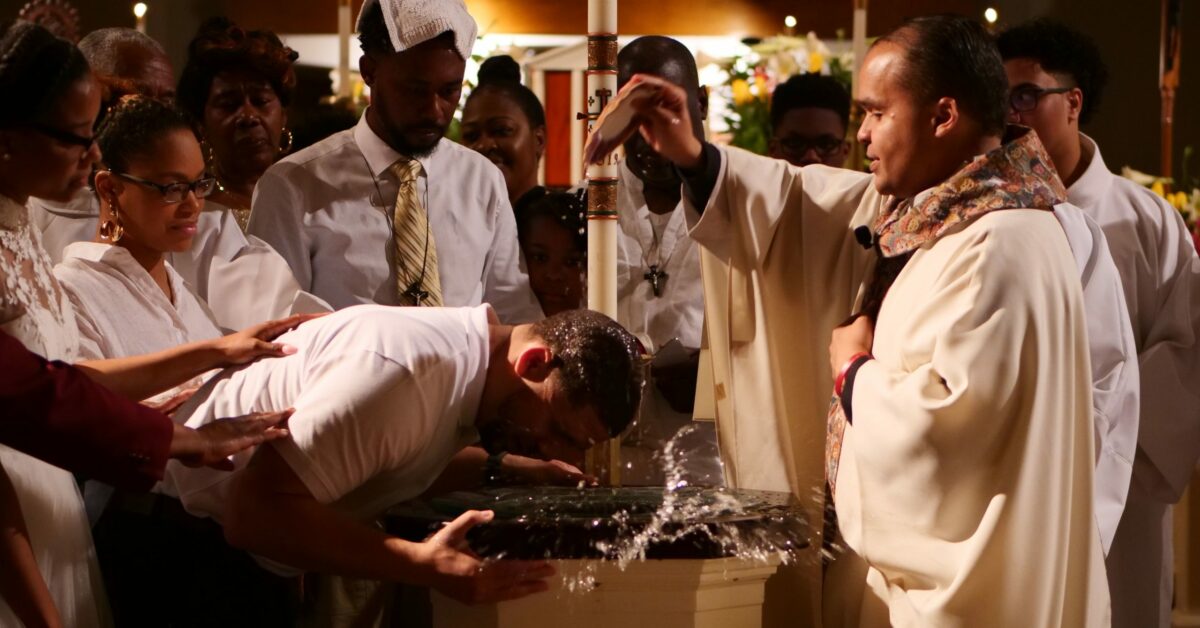Water Everywhere: God’s Gift for Transforming Life
Paul Galbreath titles the 5th chapter of Leading through the Water very simply “Water.” In a sense the entire book, and the catechumenate, drives to the water and finds its center, source, and power in the Word-drenched water. In this chapter Galbreath walks through the history of baptismal water and then seeks to learn from the past by drawing some implications for our present practice. Historical interpretation; practical reflection.
Galbreath’s brief historical survey courses through the biblical narrative until the fourth century. He notes that water doesn’t belong to us. It belongs to God and is his gift in creation. We use water because God gives it to us. As the most essential part of God’s creation, it is at the center of human and creaturely life. Not surprisingly, then, water figures prominently in God’s story through Israel and in his Son Jesus Christ. While one might quibble with his interpretation of the sources for and the historical development of baptism in the early church, there can be no denying that, as he says, “baptism…quickly became an act that defined the community” (79). Yet, it defined the community within the contours of life within specific Christian gatherings in distinct cultural contexts. While there were constancies in baptismal practice within the Christian movement, those practices reflected the distinctive features of local communities, often mirroring secular bathing patterns and other associated practices. Within a common core such as application of water in the name of the Triune God, diverse ritual practices associated with baptism arose regionally. For example, the Triune Name could be invoked through creedal questions reflecting local baptismal creeds or spoken as a formula of baptism (ie. “I baptize you in the Name of….”). This reflected ongoing adaptation and development in relationship to each local cultural context.
As Galbreath notes, in our own reflection on our baptismal practice at the center of church life and faith formation, we can draw from this wealth of biblical and historical resources to renew our baptismal theology and practice. He provides four areas of focus arising from the modern liturgical renewal movement that are worthy of consideration. First, baptism is best conceived as a congregational act. As he contends, “Recovering the primary role of the congregation as those who welcome, nurture, and support those who seek baptism is a primary goal of worship renewal” (85). Faith formation practices form the congregation to be the primary agent for transformation through the catechumenate. Second, the design of architectural space for baptism aims to situate it within the movement of the biblical narrative. For this Galbreath provides a compelling depiction of a Nicaraguan immersion font. Third, the transformative power of the water attached to the Word and the claims God makes on his children through baptism call for the use of ample amounts of water in baptism. Along with the use of a plenitude of water goes the recovery of a full panoply of biblical images for baptism, his fourth area of focus. (To develop that baptismal imagery more fully I’d recommend Maxwell Johnson’s book, Images of Baptism). These images include not only the forgiveness of sins, but death and resurrection, new birth, anointing with the seal of the Spirit, incorporation into the body of Christ, clothing, and others.
Through such reflective transformation of our baptismal practices faith formation can achieve more fully what it is intended to achieve: “a way of living into the hope of God’s promises for our lives and for our world” (90).
